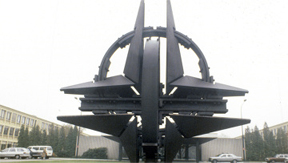Russia Dismisses NATO Concern at War Games
 Russia has dismissed concerns from NATO at the massive proportion of recent war games between Russia and Belarus close to the Polish border, according to Russian ambassador to NATO Dmitry Rogozin in statements to ITAR-TASS on November 18.
Russia has dismissed concerns from NATO at the massive proportion of recent war games between Russia and Belarus close to the Polish border, according to Russian ambassador to NATO Dmitry Rogozin in statements to ITAR-TASS on November 18.
Simply put, “We do not accept NATO’s claims,” said Rogozin.
According to NATO spokesperson James Appathurai, the Zapad-2009 (literally, West-2009) war games were “the largest since the end of the Cold War.” He also said that the 28 NATO member states were displeased that Russia failed to invite observers to the exercises, which the alliance considers to be a violation of the Vienna accords.
“There was the general sense that the political message of the exercise was incongruous with the general improvement in political relations and practical cooperation which is under way between NATO and Russia,” Appathurai said.
In a letter to the NATO General Secretary on November 12, Polish Interior Minister Radoslaw Sikorski expressed concern that the war games between Russia and Belarus were taking place too close to the Polish border.
“It’s unclear to us what’s behind these exercises, what information Russia wants to send the world, conducting the largest exercises on NATO’s borders since the moment of the fall of the Soviet Union,” said Sikorski.
In his statements on Wednesday, Rogozin dismissed concerns about the location of the exercises. “They are held on our western border because Belarus is there,” he said. “We cannot hold Russian-Belarusian exercises in Belarus somewhere in the Far East. There is no Belarus there.”
Konstantin Kosachev, Chairman of the International Affairs Committee of the Russian State Duma, had previously dismissed the concerns of the Polish Interior Minister, saying that his letter “presents Russia in the capacity of aggressor” and has a negative effect on relations between the two countries.
The Zapad-2009 war games took place this past September and involved approximately 6,000 Russian troops, 6,500 Belarusian troops, 103 aircraft and helicopters, 470 armored vehicles, 228 tanks, and 234 self-propelled and towed artillery guns, mortars and missile salvo systems.
President Dmitri Medvedev said that the exercises were defensive in nature and would be held in the future “on a regular basis.”
The statements follow an agreement signed in October by hard-line Belarusian President Alexander Lukashenko to join the rapid reaction force of the Collective Security Treaty Organization (CSTO), which would extend Russia’s anti-aircraft and anti-missile defense systems to Belarus. “Militarily speaking, it is virtually a shield against NATO,” said Pavel Borodin, State Secretary of the Union of Russia and Belarus.
The CSTO, formed in 2002 and made up of Armenia, Belarus, Kazakhstan, Kyrgyzstan, Russia, Uzbekistan and Tajikistan, is considered to be Russia’s post-Soviet response to NATO.
